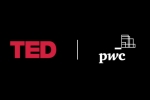Many companies aspire to build a culture of innovation, risk-taking, and disruption. It’s easy to see why: workplaces with this kind of culture are seen as exciting and inspirational places where employees love to come to work each day. (And not just for the foosball.) But building an innovative culture and making it work from day to day can be tough. All too often, organizations hang a few brightly colored posters around the office but don’t make meaningful changes to the expectations and experience of employees, resulting in a glaring misalignment between ambition and reality.
Take the IT department of a North American financial-services business. Company leaders had a strong desire to be more innovative, but their cautious and disciplined approach discouraged people from taking risks or proposing new ideas. For the IT department, the prevailing culture made sense, given the need for it to deliver resilient, fail-safe systems to the business. But management was trying to have it both ways—leaving in place all the old organizational elements that spurred them to focus on strict adherence to defined processes while asking employees to be more innovative and experimental.
Culture’s big effect on employee engagement
This kind of say–do gap is all too common, and the problems it introduces are compounded if employees begin to question their fit within the organization’s culture. PwC’s 2023 CEO Survey asked whether employees’ actions and behaviors were aligned with their company’s values and direction. Among CEOs, only 15% said this alignment occurred “rarely, occasionally, or sometimes.” But employees saw things differently. We asked the same question in PwC’s Global Workforce Hopes and Fears Survey 2023, and that number was nearly three times as high (39%).
The impact of culture and values on employee engagement is significant. Survey respondents who said their behaviors were aligned with the company culture were more likely to be satisfied with their job, more likely to recommend their company as a good place to work, and more likely to say they planned to stay on with the company. These employees were also:
more optimistic that their company will still be in business in ten years
more likely to advocate for the company publicly
more likely to say their manager acts with honesty and integrity and treats them and their co-workers fairly and equitably
more likely to say they bring innovative ideas to their teams.
The value of authentic culture
To create stronger alignment, company leaders need to take a thorough look at the organization’s culture and make sure it meshes with goals related to business performance and talent recruitment. That starts with leaders having a clear understanding of the strategic choices open to the company and being deliberate about what their business is and is not.
The reality is that an innovative culture simply isn’t right for many organizations and industries. Case in point: a high-safety environment like a nuclear power plant, where even minor failures are completely unacceptable. Similarly, open and transparent decision-making may be impossible for organizations in highly regulated sectors or those that work with sensitive or classified information. And autonomous working may be undesirable in industries that require strict operational discipline, such as air traffic control or healthcare.
These tensions do not mean that companies in highly regulated industries cannot be great places to work. Their leaders just need to be honest about what kind of culture they can create—and build a superior employee experience within the parameters of those strategic choices. A company that needs employees to follow a clear chain of command, for example, should develop very explicit career paths so that employees understand exactly how they can advance in the organization. This approach, coupled with a robust mentorship model, can help employees see a hierarchical culture as a positive, based on disciplined apprenticeship, rather than a stifling environment that disempowers the front line. In addition, by being authentic and open about the culture, the company can attract those who thrive in more structured, disciplined environments rather than those who pride themselves on “breaking the rules.”
Let’s return to the example of the IT department described earlier. How did the management team address the tension between a culture of innovation and one of reliability? The solution was to play up the former in ways that did not compromise the latter. Instead of encouraging employees to disregard established processes, for example, leaders emphasized the more creative outcomes they wanted IT to pursue and worked backward with employees to identify the “right” processes to follow in order to achieve them. Another successful approach encouraged active discussion and debate on new ideas, helping people move away from a tendency to shut those ideas down from the outset. By working on specific behaviors, the department was able to strike a better balance between innovation and reliability that worked for leadership and workers alike.
Similarly, an automotive company in Africa wanted to be innovative and customer-centric. But its command-and-control culture meant the employees closest to customers were often left out of decisions that affected customers most. And given a burdensome bureaucracy acting as a brake on work and innovation, the messaging from the top about being innovative and customer-focused clashed with the cultural realities, undermining employee engagement. Fortunately, once company executives understood these tensions, they expressed commitment to shifting the culture, starting with their own behaviors. The CEO personally attended every culture workshop and solicited ideas directly from technicians and mechanics. The company also hired a popular local celebrity to co-facilitate the workshops, to help make the conversations more relatable to employees.
The message is clear. Articulating a desired culture does not make it a reality. Only when the target culture is aligned with business realities can it be fully reflected in the everyday employee experience. And that’s when the benefits really begin to flow.
Subscribe now
Get s+b leadership insights direct to your inbox
Contact us





















